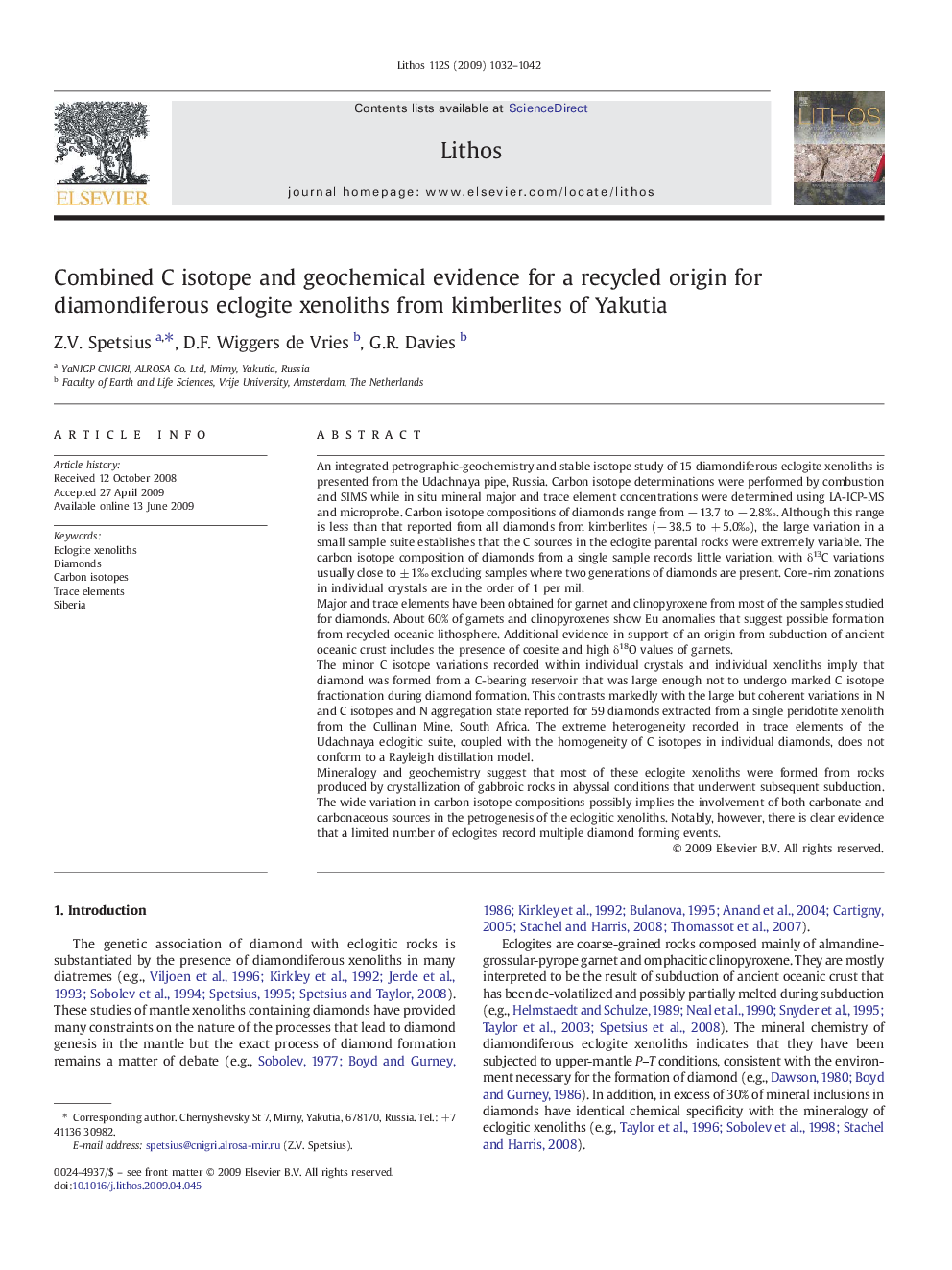| کد مقاله | کد نشریه | سال انتشار | مقاله انگلیسی | نسخه تمام متن |
|---|---|---|---|---|
| 4717216 | 1354428 | 2009 | 11 صفحه PDF | دانلود رایگان |

An integrated petrographic-geochemistry and stable isotope study of 15 diamondiferous eclogite xenoliths is presented from the Udachnaya pipe, Russia. Carbon isotope determinations were performed by combustion and SIMS while in situ mineral major and trace element concentrations were determined using LA-ICP-MS and microprobe. Carbon isotope compositions of diamonds range from − 13.7 to − 2.8‰. Although this range is less than that reported from all diamonds from kimberlites (− 38.5 to + 5.0‰), the large variation in a small sample suite establishes that the C sources in the eclogite parental rocks were extremely variable. The carbon isotope composition of diamonds from a single sample records little variation, with δ13C variations usually close to ± 1‰ excluding samples where two generations of diamonds are present. Core-rim zonations in individual crystals are in the order of 1 per mil.Major and trace elements have been obtained for garnet and clinopyroxene from most of the samples studied for diamonds. About 60% of garnets and clinopyroxenes show Eu anomalies that suggest possible formation from recycled oceanic lithosphere. Additional evidence in support of an origin from subduction of ancient oceanic crust includes the presence of coesite and high δ18O values of garnets.The minor C isotope variations recorded within individual crystals and individual xenoliths imply that diamond was formed from a C-bearing reservoir that was large enough not to undergo marked C isotope fractionation during diamond formation. This contrasts markedly with the large but coherent variations in N and C isotopes and N aggregation state reported for 59 diamonds extracted from a single peridotite xenolith from the Cullinan Mine, South Africa. The extreme heterogeneity recorded in trace elements of the Udachnaya eclogitic suite, coupled with the homogeneity of C isotopes in individual diamonds, does not conform to a Rayleigh distillation model.Mineralogy and geochemistry suggest that most of these eclogite xenoliths were formed from rocks produced by crystallization of gabbroic rocks in abyssal conditions that underwent subsequent subduction. The wide variation in carbon isotope compositions possibly implies the involvement of both carbonate and carbonaceous sources in the petrogenesis of the eclogitic xenoliths. Notably, however, there is clear evidence that a limited number of eclogites record multiple diamond forming events.
Journal: Lithos - Volume 112, Supplement 2, November 2009, Pages 1032–1042